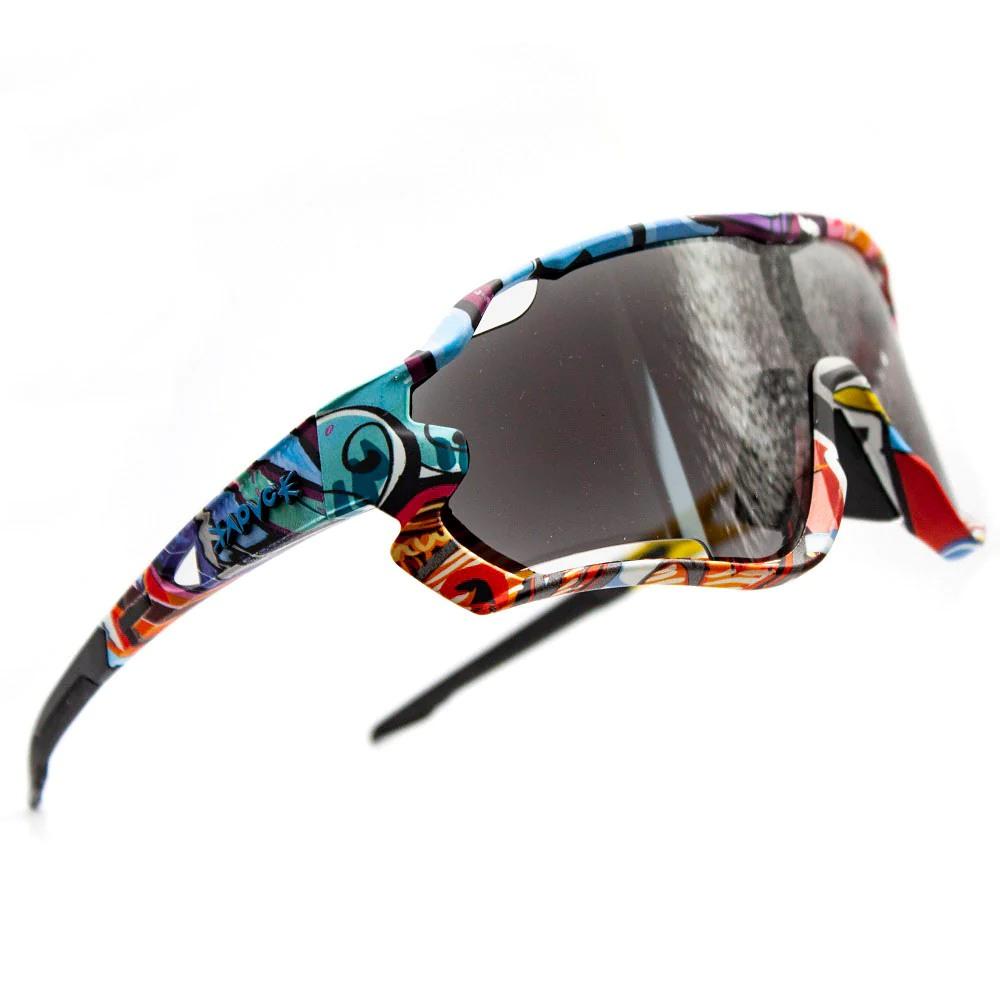If you’re looking for cycling glasses that can adjust to changing light conditions, photochromic lenses might be a good choice. When making your purchase, there are a few considerations to make.
For reducing glare from snow and water, polarized lenses are perfect. They’re also excellent for driving in wet weather and trekking up glaciers.
Table of Contents
What are Photochromic Lenses?
You can have one pair of glasses that can change color to fit the changing lighting conditions by using photochromic lenses. In bright, sunny weather, they provide protection from UV rays and glare, but they remain transparent indoors or in low light.
Your lens contains embedded tiny silver molecules that darken the lens when exposed to UV light. The molecules reshape and the lenses regain their clarity when the UV light is eliminated. For those who spend a lot of time outdoors and would prefer to wear their glasses comfortably without having to switch between pairs, photochromic lenses are a great choice. They are also great for folks who need to protect their eyes from harsh lighting conditions like digital devices or fluorescent lights because they spend a lot of time indoors.
Photochromic focal points come in different focal point tones, including dark, brown, and green. They can be matched with different coatings to upgrade their presentation. For instance, hostile to intelligent (AR) covering increments perceivability and decreases irritating glare in brilliant conditions. These focal points are accessible in bifocal and multifocal styles to oblige various remedies. They are typically produced using polycarbonate, a safe and effect safe material that can be made into many shapes and sizes.
What is the Difference Between Photochromic and Polarized Lenses?
Unlike polarized lenses, the best photochromic cycling glasses darken when exposed to UV rays from sunlight. The change occurs when UV light hits the photochromic molecules in your lens, and they begin to alter shape, decreasing their transparency. This creates the darker tint of your sunglasses and protects you from harmful UV rays while on the road or trail. Then, when you go back indoors, the molecules revert to their original shape, and the lenses become clear again.
Photochromic focal points are perfect for cyclists since they kill the requirement for two sets of eyewear. This permits you to have one sets that meets your requirements in different conditions and lighting conditions. Photochromic focal points don’t dark LCDs, so really taking a look at your GPS information or cell phone during a ride is more open.
Then again, energized focal points just work in splendid daylight and can make it trying to see LCDs. They are additionally just accessible as shades and not as customary eyeglasses.
One more drawback to enraptured focal points is that they are not extremely successful in low-light or overcast circumstances, and they can’t be worn while driving a vehicle or strolling on snow or water where there may be patches of ice. Furthermore, a few enraptured focal points don’t obscure well while wearing them in a vehicle or when presented to UV light from vehicle windshields.
How do Photochromic Lenses Work?
Photochromic focal points contain unique particles that respond to the sun’s UV beams. At the point when they distinguish UV radiation, these particles change shape to obscure the focal point. The focal points return to their straightforward state once the UV beams are not generally identified. This interaction happens consequently as you change in accordance with various lighting conditions.
The change cycle requires 30-60 seconds to finish, contingent upon temperature. Normally, the focal points are more obscure in colder climate and lighter when warm. While most photochromic focal points are energized, some don’t — particularly those intended to utilized while drive.
Since photochromic focal points safeguard the eyes from glare and UV radiation, they are an incredible decision for cyclists. They additionally give flexibility by wiping out the need to claim separate sets of glasses for indoor and open air exercises.
For instance, some bikers wear photochromic focal points while working out or getting things done during the day and change to a couple of shades for their open air rides. Rapidly adjusting to changing lighting conditions can essentially decrease eye strain and exhaustion.
Which Lenses are Right for You?
There’s nobody size-fits-all answer for eyewear, particularly when your vision is fundamental. That is the reason it’s critical to visit a believed eye care supplier for an exhaustive test, which can assist with guaranteeing your eyes are solid and figure out what sort of focal points you really want. Then, at that point, you can browse our tremendous determination of glasses and focal points to address your issues.
Photochromic focal points are an undeniably famous choice for cyclists since they can dispense with the requirement for a different sets of eyeglasses and shades. The focal points naturally acclimate to various light levels, obscuring in more splendid circumstances and turning out to be clear as you move inside or into the shade.
Aside from the convenience factor, these lenses also provide a wide field of vision and offer superior UV protection. And, if you choose a lens coating such as an anti-reflection or hydrophobic treatment, you can reduce glare and fogging while keeping your vision clear.
Plenty of options are available for cycling-specific photochromic lenses, from big-name brands to a variety of small direct-to-consumer companies looking to make a name for themselves.
Also Read – 4 Reasons Why You Need an Automatic Video Editor App




